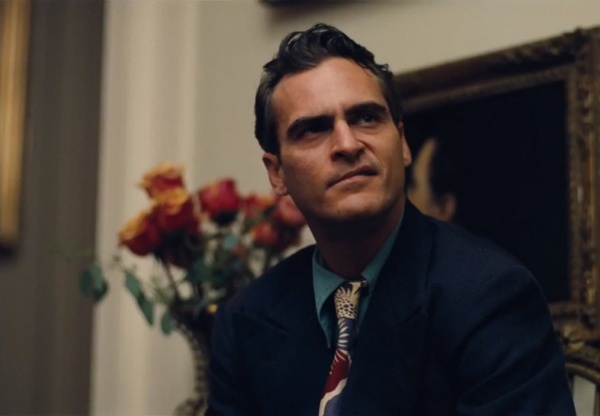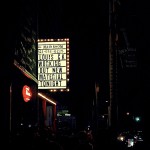“The moon is low and I may let go”
In the awakening of a religious and spiritual revolution in post-WWII America, drifter Freddie Quell (Joaquin Phoenix) who is an “Able-bodied” seaman, encounters leader Lancaster Dodd (Philip Seymour Hoffman), a “writer, a doctor, a nuclear physicist, a theoretical philosopher, but above all, a man,” (in Dodd’s own words) that has offered to help Freddie shape his life as a tortured Veteran by joining “The Cause,” aka Dodd’s cult-like group of people who follow and live by his made-up beliefs.
In Paul Thomas Anderson’s The Master you learn of a unique underlying love story between Freddie: the lost and tortured soul who has lived through the war, at sea in the Navy, and Dodd: The Master of The Cause himself, drawn together by their initial master/puppet relationship. The film is based a lot on Thomas Pynchon’s novel Inherent Vice, and also has threads of Scientology-like aspects throughout. For example, Dodd’s therapeutic and alleged “leukemia-curing” practices, capable of reaching inside the hidden memories inside the mind, are akin to auditing, a “spiritual counseling” method used by scientologists.
Oh, and Freddie (who by the way, is quite charming and always horny) gets really wasted off his homemade Moonshine for 80% of the movie. He has a special recipe that looks like it requires a shit ton of salt. Dodd adores the taste and makes sure he has it on hand at all times while staying in his very full-house of wife, kids, and other members of “The Cause.” And there’s a really awkward handjob scene with Dodd and his wife Sue (Amy Adams) that I don’t want to spoil, but just know that there is a handjob. And it’s not the prettiest.
Johnny Greenwood from Radiohead composed the entire score, and that aspect of the movie alone deserves its own feature. But everything about the coordination of these tracks and sounds–from Blues singers such as Ella Fitzgerald (more specifically, “Get Thee Behind Me Satan,” where the “the moon is low and I may let go” quote originated) and Helen Forrest appearing throughout, all the way to Greenwood’s intense rhythms of “darker” sounding strings–orchestrate the 1950s-ish vibe of the movie’s entirety quite perfectly.
Now I only saw the movie once, and people are saying that like many films, in order to fully absorb all the feature (especially in 70mm!) has to offer, one must view it at least three times. But from what I did pick up the first time, The Master is an amazing blend of cinematic brilliance and a unique love story that’s acting accounts for its outstandingness. A must-see.




